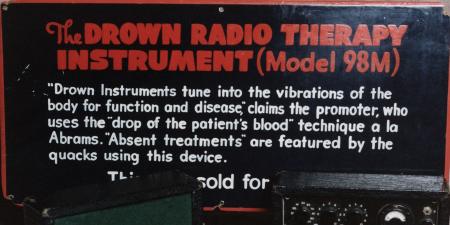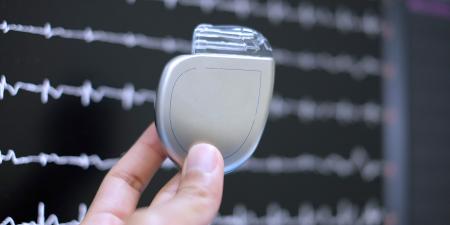Abstract
Many US patients will have an implantable device during their lives. The AMA Code of Medical Ethics offers guidance for weighing need for patient-subjects’ safety against health care sector demand for innovation.
Role of the American Medical Association Code of Medical Ethics
Given that fewer than 1% of medical devices that enter the US market have undergone the 2 clinical trials required for pharmaceutical approval,1,2 resources such as the American Medical Association (AMA) Code of Medical Ethics are especially important in helping clinicians balance access to new devices against safety concerns. The AMA Code provides 2 opinions relevant to implantable devices—Opinion 1.2.9, “Use of Remote Sensing and Monitoring Devices,”3 and Opinion 7.1.2, “Informed Consent in Research.”4 Both affirm physicians’ ethical obligations to disclose to patients whether a device has been rigorously tested and to support safety and effectiveness research on devices.
The AMA Code offers guidance to physicians on use of innovative and emerging therapies in Chapter 7, “Opinions on Research and Innovation,”5 and on implantable monitoring devices in Opinion 1.2.9.3 Both suggest the importance of maintaining patient-physician relationships and affirm physicians’ ethical obligations to disclose to patients whether a novel therapy has been rigorously tested, to promote patient safety, and to improve quality of care.
Opinion 1.2.9 offers guidance relevant to a range of technologies and is especially relevant for devices with remote monitoring capabilities, which pose privacy risks. It states that physicians should “explain how the device(s) will be used in the patient’s care and what will be expected of the patient in using the technology, and disclose any limitations, risks, or medical uncertainties associated with the device(s) and data transmission.”3 This guidance clarifies physicians’ ethical obligation to disclose known risks. These devices can improve efficiency and quality of care and promote access, but they can also pose risks to the safety and confidentiality of patient information.3 As devices become more advanced and interconnected, cybersecurity risks must also be considered.6 Although no cyberattack leading to patient harm has been reported to date, the threat is real, has been demonstrated in research, and has been voiced by patients.6 Opinion 1.2.9 also states that physicians should support research into the safety and effectiveness of remote sensing and monitoring devices and advocate for appropriate oversight.3
Physicians searching for more ethics guidance on implantable devices can also consult chapter 7 of the AMA Code, which contains opinions on research, innovation, and uses of new technology.5 While these opinions do not reference implantable devices directly, their guidance can be applied to riskier implantable devices. Opinion 7.1.2 states that physicians should disclose “the nature of the experimental drug(s), device(s), or procedure(s) to be used in research.”4 Additionally, Opinion 7.1.1, “Physician Involvement in Research,” states that physicians should uphold rigorous scientific, ethical, and legal standards in conducting and disseminating research results.7
Conclusion
In short, physicians have ethical obligations to be honest with patients about the risks and purposes of implantable devices. The AMA Code affirms that conveying relevant information to patients is key to informed consent. Moreover, physicians should continue, through research and advocacy, to ensure that riskier devices are rigorously tested and comply with federal regulations.
References
-
Institute of Medicine. Medical Devices and the Public’s Health: The FDA 501(k) Clearance Process at 35 Years. National Academies Press; 2011.
-
Development and approval process: drugs. US Food and Drug Administration. October 28, 2019. Accessed June 1, 2021. https://www.fda.gov/drugs/development-approval-process-drugs
-
American Medical Association. Opinion 1.2.9 Use of remote sensing and monitoring devices. Code of Medical Ethics. Accessed October 17, 2020. https://www.ama-assn.org/delivering-care/ethics/use-remote-sensing-monitoring-devices
-
American Medical Association. Opinion 7.1.2 Informed consent in research. Code of Medical Ethics. Accessed October 17, 2020. https://www.ama-assn.org/delivering-care/ethics/informed-consent-research
-
American Medical Association. Chapter 7: opinions on research and innovation. Code of Medical Ethics. Accessed June 1, 2021. https://www.ama-assn.org/system/files/2019-01/code-of-medical-ethics-chapter-7.pdf
- Das S, Siroky GP, Lee S, Mehta D, Suri R. Cybersecurity: the need for data and patient safety with cardiac implantable electronic devices. Heart Rhythm. 2021;18(3):473-481.
-
American Medical Association. Opinion 7.1.1 Physician involvement in research. Code of Medical Ethics. Accessed October 17, 2020. https://www.ama-assn.org/delivering-care/ethics/physician-involvement-research



